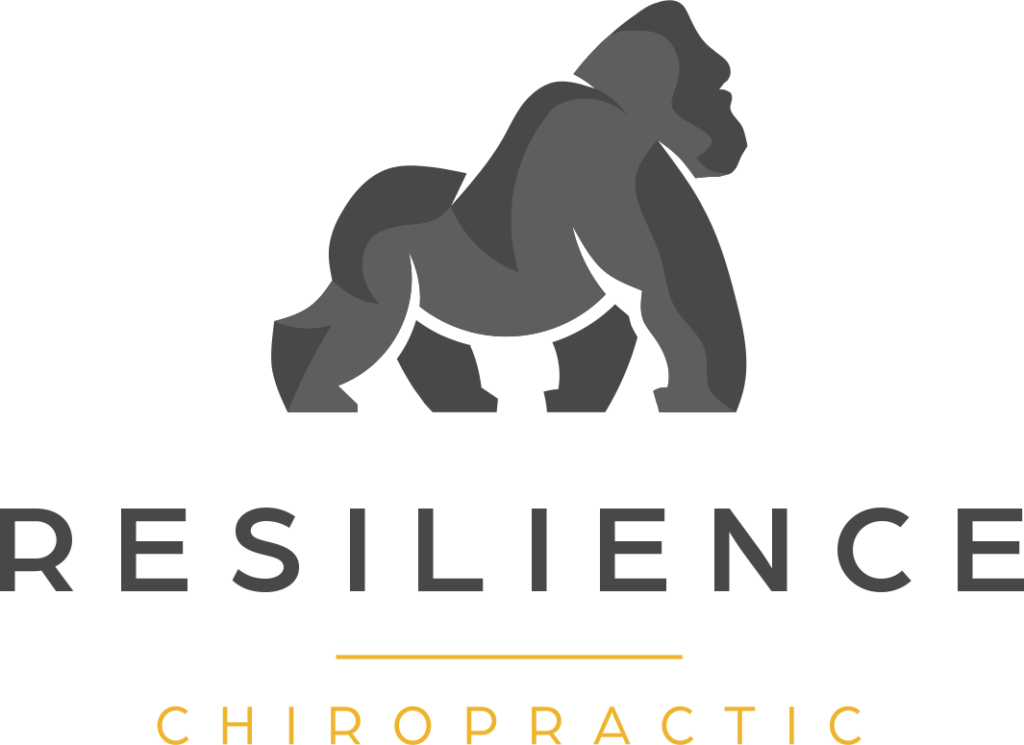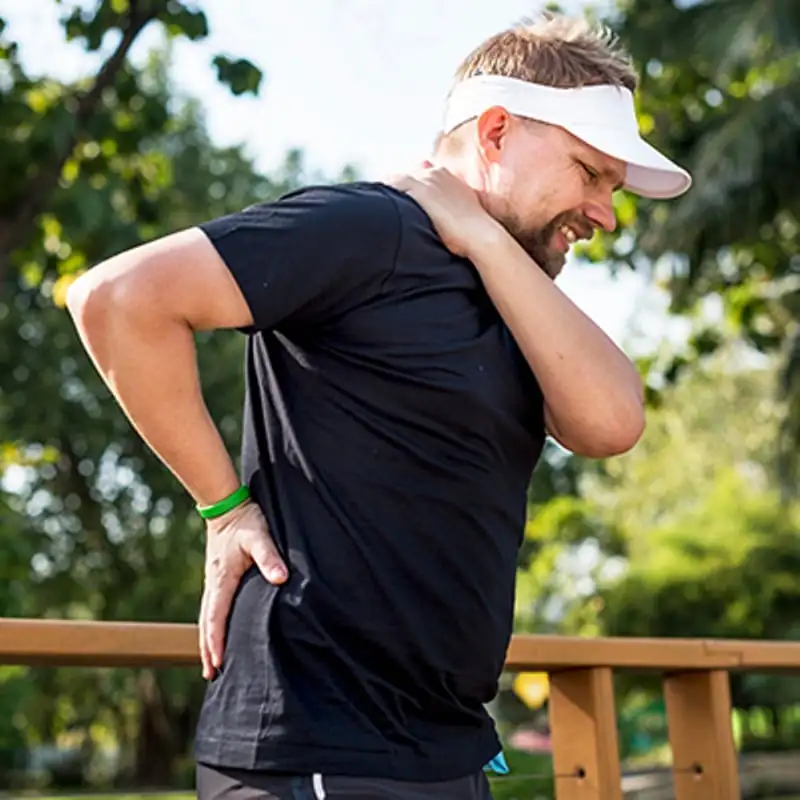As a local chiropractor, I understand that if you've recently sustained a neck injury, you're likely seeking effective ways to support your recovery. It's crucial to approach this healing process with care and intention. Gentle techniques can play a significant role in your recovery, helping you regain mobility while reducing discomfort.
In my practice, I often recommend simple stretches and mindfulness exercises that can be beneficial. These techniques not only promote physical healing but also foster a sense of calm and well-being. However, I want to emphasize that recovery is not one-size-fits-all. It's essential to identify the methods that resonate with you personally, as each individual's needs can vary.
By exploring these gentle approaches, you may find new pathways to improve your condition and enhance your overall health. I'm here to guide you on this journey, ensuring that you stay on the right track toward lasting wellness. Let's work together to reshape your recovery experience and empower you on your path to healing.
Understanding Neck Injuries
As a local chiropractor, I often encounter patients who are unfamiliar with neck injuries and their implications for overall health. Neck injuries can vary widely, from mild strains to more severe conditions like fractures or herniated discs. It's crucial to recognize the signs and symptoms that may indicate a neck injury.
Do you frequently experience pain or stiffness in your neck? Perhaps you've noticed limited mobility or discomfort when turning your head. These could be early warning signs that something isn't quite right.
When considering neck injuries, it's important to think about the various causes. Activities such as sports, car accidents, and even everyday habits like poor posture can lead to significant issues. You might be surprised to learn that something as simple as sleeping in an awkward position can result in considerable neck strain.
Understanding the factors that contribute to neck injuries is essential for taking preventive measures to protect your health.
Additionally, it's vital to familiarize yourself with the different types of neck injuries. One common injury I see in my practice is whiplash, which often occurs in auto accidents when the neck is jerked back and forth rapidly.
Another serious condition is disc herniation, where the cushioning between your vertebrae slips or ruptures, causing pain and potential nerve issues. Be mindful of symptoms such as headaches, tingling in the arms, or weakness—these could indicate nerve involvement and shouldn't be ignored.
At my clinic, we prioritize natural healing methods that can help alleviate pain, restore mobility, and promote overall wellness. If you have any concerns about your neck health, I encourage you to reach out for a consultation.
Together, we can explore safe and effective approaches to help you feel your best.
Importance of Gentle Recovery
Recovering gently from a neck injury is crucial for promoting healing and avoiding further complications. As a chiropractor, I often see patients who are eager to return to their normal activities, but it's important to understand that your body needs time to heal properly. Jumping back into strenuous activities or utilizing aggressive recovery methods can lead to setbacks or even worsen your condition. By embracing a gentle recovery approach, you allow your body the opportunity to restore itself without additional strain.
Gentle recovery is beneficial because it reduces inflammation and pain, allowing your muscles and tissues to repair effectively. It's imperative to listen to your body and recognize its limits. Pushing through discomfort can hinder your progress, so it's essential to create a supportive environment for healing. This includes getting adequate rest, staying properly hydrated, and maintaining good nutrition.
Incorporating gentle movements and mindful practices into your recovery routine can significantly enhance your overall well-being. Simple techniques like deep breathing and gentle neck movements can promote relaxation and improve blood flow, facilitating your recovery. Moreover, this mindfulness helps you develop a deeper awareness of your body's needs during this vulnerable time.
Remember, every recovery journey is unique. What works for one person may not be suitable for you. Take your time and don't hesitate to seek professional guidance if you're uncertain about your recovery plan. As your chiropractor, I'm here to provide personalized care and support.
Gentle Stretching Techniques
As a local chiropractor, I want to emphasize the importance of gentle stretching techniques in your recovery from a neck injury. These techniques are essential for maintaining flexibility and promoting healing without placing additional strain on your neck.
Let's explore some simple movements that can help ease stiffness and improve circulation.
First, consider incorporating neck tilts into your routine. To perform this stretch, gently drop your ear towards one shoulder and hold the position for 15-30 seconds. Afterward, switch sides and repeat. This movement is effective in targeting the muscles along the sides of your neck, helping to alleviate tension.
Next, you can try chin tucks. While sitting or standing with a straight spine, gently tuck your chin towards your chest, ensuring your shoulders remain relaxed. Hold this position for about 5 seconds before releasing. Chin tucks aren't only beneficial for strengthening your neck muscles but also play a crucial role in improving your posture.
Rotational stretches can also be incredibly helpful. While seated, slowly turn your head to one side, aiming to look over your shoulder. Hold this position for 15 seconds, then return to center before switching sides. This stretch enhances mobility and reduces tension in the neck area.
Don't overlook the benefits of shoulder rolls. Raise your shoulders toward your ears, then roll them back and down. Repeat this motion 5-10 times. This action relaxes the shoulder area and alleviates strain on your neck, which is particularly beneficial during your recovery.
Always listen to your body during these stretches. If you experience any pain or discomfort, stop immediately. Remember, the goal is to perform these stretches gently without pushing yourself too hard.
Consistency is key to your recovery, so aim to incorporate these techniques into your daily routine. Progress may be gradual, and that's perfectly okay—be patient with yourself as you heal.
As your chiropractor, I'm here to support you on your journey to better health and wellness.
Mindfulness and Relaxation Practices
As a local chiropractor, I want to share with you the importance of incorporating mindfulness and relaxation practices into your recovery journey, especially if you're dealing with a neck injury.
Techniques such as meditation and focused breathing exercises can play a crucial role in reducing stress, which, in turn, promotes the healing process.
Not only do these practices help alleviate discomfort, but they also contribute significantly to your overall well-being.
Embracing these natural healing methods alongside chiropractic care can enhance your recovery experience and support a healthier lifestyle.
Meditation Techniques for Healing
As a chiropractor dedicated to promoting natural healing, I often emphasize the importance of meditation techniques in the recovery process for neck injuries. These practices can significantly aid in reducing stress and tension, which are often contributors to your discomfort.
By fostering mindfulness and relaxation, you create a nurturing environment that supports your healing journey.
Let's explore some effective meditation techniques that can be beneficial:
- Body Scan Meditation: This technique involves tuning into each part of your body, starting from your toes and moving up to your neck. As you focus on each area, pay attention to any sensations or tightness, and consciously encourage relaxation. This practice can help release tension that may be affecting your neck.
- Guided Imagery: Picture a serene and comforting scene, a place where you feel calm and safe. Allow this visualization to occupy your mind, helping you disconnect from any discomfort or stress tied to your injury. It's a wonderful way to promote mental tranquility.
- Loving-Kindness Meditation: This approach invites you to send positive thoughts and compassion to yourself and those around you. By cultivating feelings of connection and care, you can alleviate some of the emotional burdens associated with your physical pain, leading to a more holistic healing experience.
Integrating these meditation techniques into your daily routine can greatly enhance your recovery process.
I encourage you to try them and observe how they contribute to your overall healing. Remember, your mental state plays a crucial role in physical recovery, and these practices can be powerful tools on your journey to wellness.
Breathing Exercises for Relief
As a chiropractor dedicated to your holistic well-being, I want to share with you the power of breathing exercises in your recovery journey, especially if you're dealing with a neck injury. Understanding how your body responds to stress and tension is crucial, and by focusing on your breath, you can significantly reduce discomfort and foster healing.
To begin, find a comfortable position—whether that's sitting in a chair or lying down on a flat surface. Close your eyes and take a deep breath in through your nose, allowing your abdomen to rise as you fill your lungs completely. Hold that breath for just a moment before slowly exhaling through your mouth, consciously releasing any tightness you may feel in your neck and shoulders.
I encourage you to repeat this breathing cycle several times. With each breath, aim to gradually extend both your inhales and exhales. As you breathe, visualize the air moving into your neck, bringing warmth and a sense of healing energy. If your thoughts drift away, gently guide your focus back to your breath.
You might also find it helpful to practice a technique called "4-7-8 breathing." Inhale for a count of four, hold that breath for seven counts, and then exhale for eight counts. This technique is particularly effective at calming your nervous system and alleviating discomfort.
Incorporating these breathing exercises into your daily routine can cultivate a deeper sense of relaxation, which is vital for your recovery. Remember, dedicating time to mindful breathing isn't only beneficial; it's essential for your healing process.
As your chiropractor, I'm here to support you every step of the way on your path to better health.
Therapeutic Exercises for Strength
As a local chiropractor, I want to emphasize the importance of therapeutic exercises in your recovery journey, especially if you've experienced a neck injury. Strengthening the muscles around your neck is crucial not only for enhancing stability but also for preventing future injuries.
It's essential to approach these exercises with care, ensuring that you don't strain your healing neck. Start with gentle movements that enhance flexibility, and as you feel more comfortable, you can gradually introduce strength-building exercises.
Here are some effective therapeutic exercises that I recommend incorporating into your recovery routine:
- Isometric Neck Exercises: For this exercise, press your forehead gently into your palms while resisting the push. Hold this position for about five seconds, then relax. This technique helps to strengthen the neck muscles while keeping movement to a minimum, which is beneficial during your recovery.
- Shoulder Shrugs: Inhale and lift your shoulders towards your ears, then exhale and let them drop back down. This straightforward exercise not only helps relieve tension but also builds strength in your upper body.
- Chin Tucks: Another effective exercise is to gently tuck your chin towards your chest, holding it for a few seconds before releasing. This movement strengthens your deep neck flexors, which is vital for improving your posture and stability.
Always pay attention to how your body feels during these exercises; if you experience any discomfort, it's important to stop. As your neck heals, you can gradually increase the intensity and frequency of your exercises.
Consistency is key in building strength, so aim to incorporate these exercises into your daily routine for optimal results. Your dedication will lead to a stronger, more resilient neck, enhancing your overall well-being.
Heat and Cold Therapy
As a local chiropractor, I want to share how heat and cold therapy can significantly aid in your recovery from a neck injury. Many patients are unfamiliar with these natural healing methods, but they can truly be game changers.
Heat therapy is excellent for relaxing tight muscles and enhancing blood circulation, which promotes healing.
On the other hand, cold therapy is effective in reducing inflammation and numbing pain, giving your body the relief it needs.
By understanding the distinct benefits of both therapies, you can customize your recovery journey and support your healing process more effectively.
If you have any questions about how to incorporate these therapies into your routine, feel free to reach out!
Benefits of Heat Therapy
As a local chiropractor, I want to share with you the significant benefits of heat therapy for those of you who may be recovering from neck injuries. This natural healing method can provide much-needed relief and promote your body's healing process.
When you apply heat to your neck, it helps increase blood flow, delivering essential nutrients and oxygen to the injured area. This not only aids in your recovery but also helps alleviate stiffness and discomfort.
Here are some key advantages of incorporating heat therapy into your recovery routine:
- Pain Relief: Heat therapy works wonders in relaxing tense muscles, which can significantly reduce the pain and discomfort associated with neck injuries.
- Improved Flexibility: The increased circulation from heat application enhances your range of motion, making everyday activities and rehabilitation exercises easier to perform.
- Stress Reduction: The soothing warmth of heat can promote relaxation, which helps to alleviate stress and improves your overall sense of well-being.
To effectively use heat therapy, consider using options like heating pads, warm towels, or even taking warm baths. It's important to monitor the temperature to prevent burns.
By integrating heat therapy into your recovery plan, you can enhance your journey toward healing, allowing you to regain your strength and mobility naturally.
If you have any questions or would like to learn more about how chiropractic care can assist in your recovery, feel free to reach out!
Advantages of Cold Therapy
As your local chiropractor, I want to share some valuable information about the role of cold therapy in your recovery from neck injuries. While many people are familiar with heat therapy, it's important to recognize that cold therapy is equally essential for healing.
When you apply cold therapy, you're effectively reducing inflammation and swelling in the affected area. This is especially crucial right after an injury, as it can help minimize tissue damage and alleviate pain. I often recommend using cold packs or ice wrapped in a cloth for immediate relief.
Remember to apply it for about 15 to 20 minutes at a time, giving your skin a break in between to prevent any damage.
One of the great benefits of cold therapy is its ability to numb sharp pain, which can make it easier for you to move and participate in gentle rehabilitation exercises. This is an important part of your recovery process.
Moreover, cold therapy can help decrease muscle spasms, allowing your neck muscles to relax and recover more efficiently. By incorporating this technique into your recovery routine, you'll likely notice improvements in your mobility and a reduction in discomfort.
If you have any questions about how to effectively use cold therapy or other natural healing methods, feel free to ask during your next visit!
Posture Correction Strategies
As a chiropractor, I want to emphasize the significance of maintaining good posture for your overall health, especially when it comes to preventing neck injuries and aiding in recovery. Your posture plays a crucial role in the alignment of your spine and the functionality of your muscles. By practicing proper posture, you can alleviate strain on your neck and facilitate the healing process.
Here are some effective strategies I recommend to help you improve your posture:
- Optimize your workspace: Ensure that your computer screen is at eye level and that your chair provides the necessary support for your back. Your feet should rest flat on the floor. This setup will help you avoid leaning forward or hunching over, which can lead to discomfort and tension in your neck.
- Try the wall test: Stand with your back against a wall, allowing your heels to touch it. Your head, shoulders, and buttocks should also lightly make contact with the wall. If you find it difficult to maintain this position comfortably, it's a clear indication that you need to pay more attention to your posture throughout the day.
- Strengthen your core: Incorporating exercises that target your core muscles is vital for supporting good posture. A strong core stabilizes your spine, making it much easier to maintain an upright position, reducing the risk of injury.
By integrating these strategies into your daily routine, you can't only recover from any neck discomfort but also prevent future problems.
Remember, consistency is essential. Make it a habit to check in with yourself regularly throughout the day to ensure you're sitting or standing correctly, especially during long periods of desk work or while using your smartphone.
With time and dedication, good posture will become second nature, contributing positively to your overall health and well-being. If you have any questions about how chiropractic care can support your posture and health, feel free to reach out.
When to Seek Professional Help
As a local chiropractor, I want to emphasize the importance of knowing when to seek professional help for neck injuries, especially if you're unfamiliar with chiropractic care and natural healing methods.
If you've sustained a neck injury from an accident, fall, or sports activity, it's vital to keep a close eye on your symptoms.
One of the key indicators that you should consult a chiropractor is if you experience persistent pain that doesn't improve with rest or gentle stretching. If that pain intensifies or radiates to your shoulders, arms, or hands, it's a strong signal that professional evaluation is needed.
You should also be aware of any weakness, numbness, or tingling sensations in your arms or hands. These symptoms could suggest nerve involvement, which requires timely assessment.
Furthermore, if you're dealing with headaches that appear to originate from your neck, don't overlook them. Headaches can indicate underlying issues that necessitate medical attention.
Another sign it's time to reach out to a chiropractor is if you find it difficult to move your head or if stiffness is limiting your range of motion. A chiropractor can thoroughly assess your condition and suggest tailored treatments, including spinal adjustments, physical therapy, and lifestyle advice, which can promote your natural healing.
If you've tried self-care options—like applying ice or heat, or using over-the-counter pain relievers—without any improvement after a week, I encourage you to seek help.
Waiting too long to address your symptoms can delay your recovery and potentially lead to chronic issues. Remember, your health and well-being are paramount, and seeking the right support from a chiropractic professional can significantly enhance your healing journey.
Maintaining Long-Term Neck Health
As your local chiropractor, I want to share some essential habits that can help you maintain long-term neck health. These practices not only aid in preventing injuries but also enhance your overall well-being. By taking a proactive approach, you can ensure that your neck remains strong and flexible.
First and foremost, let's talk about posture. It's crucial to be mindful of how you hold your body throughout the day. Whether you're at your desk, scrolling through your phone, or lounging on the couch, maintaining good posture is key. Keep your head aligned with your spine and avoid slouching.
Consider investing in ergonomic furniture, which can provide the necessary support for your neck.
Next, I encourage you to include stretching and strengthening exercises specifically designed for your neck. Simple neck stretches can help relieve tension and boost flexibility. Additionally, strengthening exercises help build the muscles that support your neck, significantly reducing the risk of injury over time.
Lastly, be conscious of your daily habits. Try to limit screen time and remember to take regular breaks to avoid prolonged strain on your neck. When it comes to sleep, choose a pillow that supports your neck and keeps it aligned with your spine.
To summarize, here are a few key practices to adopt:
- Maintain good posture throughout the day.
- Engage in regular neck stretches and strengthening exercises.
- Limit screen time and take breaks to reduce strain.
Conclusion
As a local chiropractor, I want to emphasize the importance of gentle techniques for neck injury recovery. Restoring mobility and alleviating pain is crucial, and there are several natural methods you can incorporate into your healing journey. Practicing stretching exercises can help improve flexibility, while mindfulness techniques can aid in reducing stress and tension in the neck area. Additionally, maintaining proper posture is essential for supporting your spine and overall neck health.
Listening to your body is key; if you feel discomfort, consider using heat or cold therapy to soothe any inflammation or stiffness. If you find that pain persists, I encourage you to seek professional help. Chiropractic care can provide targeted relief and support your recovery process. By prioritizing your neck health today, you're investing in your long-term wellness and building resilience against future injuries. Remember, you don't have to navigate this journey alone—I'm here to help guide you every step of the way.



